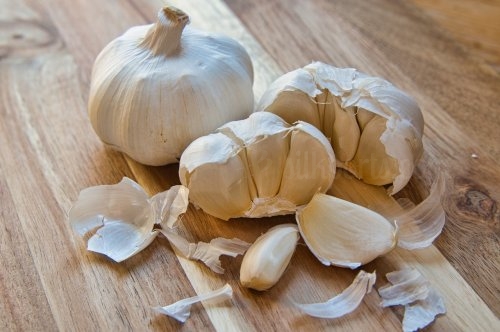
What are Lemon / Lemon Peel?
The lemon is a species of small evergreen trees in the flowering plant family Rutaceae, native to Asia, primarily Northeast India (Assam), Northern Myanmar or China.
The tree's ellipsoidal yellow fruit is used for culinary and non-culinary purposes throughout the world, primarily for its juice, which has both culinary and cleaning uses.The pulp and rind are also used in cooking and baking. The juice of the lemon is about 5% to 6% citric acid, with a pH of around 2.2, giving it a sour taste. The distinctive sour taste of lemon juice makes it a key ingredient in drinks and foods such as lemonade and lemon meringue pie.
The peel can be used in the manufacture of pectin, a polysaccharide used as a gelling agent and stabilizer in food and other products. Lemon can be used different ways,
- As Lemon peel
- As Lemon oil
- As Lemon leaves
- As Lemon Fruit
Lime VS Lemon
Limes are small, round, and green, while lemons are usually larger, oval-shaped, and bright yellow. Nutritionally, they're almost identical and share many of the same potential health benefits. Both fruits are acidic and sour, but lemons tend to be sweeter, while limes have a bitterer flavor.
Green Lemon
The Sicilian green Lemon, a citrus fruit with green skin, is a highly prized variety that matures in the summer. The verdello lemon is recognisable by the characteristic deep green colour of its skin, which is due to the ‘third flowering’ of the Femminello Siracusano. It is rich in vitamin C, calcium, potassium, phosphorus and magnesium. It has excellent organoleptic properties, a flesh with a slightly acidic taste and is rich in antioxidants, vitamins and minerals.
How to growing Lemon?
Lemon trees grow 10 to 20 feet tall and 10 to 15 feet wide. Lemons are more cold-sensitive than all other citrus trees. Due to this cold sensitivity, lemon trees should be planted near the south side of the home. Lemon trees need protection from frost.
Growing them near the house should help with this. Lemon trees also require full sunlight for adequate growth. While lemon trees can tolerate a range of soils, including poor soil, most prefer well-drained, slightly acidic soil. Lemon trees should be set slightly higher than ground.
Therefore, dig a hole somewhat shallower than the length of the root ball. Place the tree in the hole and replace soil, tamping firmly as you go. Water sufficiently and add some mulch to help retain moisture. Lemon trees require deep watering once weekly. If necessary, pruning may be done to maintain their shape and height.
Best Climate for growing Lemon
It can be successfully grown in almost all climatic zones in Sri Lanka but tropical hot areas with high sunshine are most suitable. Temperature – 25ºC – 30ºC.
Rainfall – Resistant to severe droughts and severe winds and wildfires. Well spread rainfall with a few inches is adequate. High rainfall reduces the oil yield.
Quantity and quality of oil is low when the lemongrass is grown under high shade, in cooler climates, and in highly fertile soils.
Well-drained sandy soil is most suitable and hard clay soils are not good for the growth. Most of the poor soil types in Sri Lanka are suitable for lemongrass but higher yield can be obtained from soils with high humus. However, lemongrass can be grown even in the pathana lands, marginal tea lands, severely eroded lands and lands which are not suitable to grow any other crop.
Lemon Harvesting
Harvesting lemons from your backyard is very rewarding but it’s important to make sure you harvest them at the right time and in the correct way.
Lemon trees usually start producing fruit 3 to 5 years after planting. It takes between 4 to 6 months from flowering to fruiting and the harvest season usually lasts about 3 months, depending on the variety.
When to harvest lemons
- Lemons are ready to pick when the skin turns from green to yellow and glossy.
- The fruit should be 2 to 3 inches (5-7.5 cm) in width and the fruit will be easy to squeeze.
- Lemons can also be picked while they’re still slightly green, and left at room temperature to ripen.
- Avoid harvesting lemons when they are still dark green, hard, or have a thick skin. If you harvest them while they’re immature the fruits may not ripen properly.
- Although it might be tempting to pick lemons before they’re ready, you’ll get a much larger crop if you allow them to ripen properly.
How to pick lemons
- Lemons are best picked by hand so you won’t need clippers or pruning shears.
- Hold the fruit in your hand and gently twist it to remove it from the tree.
- The lemon should come off easily without much effort.
- If you have a large lemon tree you’ll need a sturdy ladder to reach the highest fruits.
- Avoid shaking the branches to harvest lemons as this can damage the tree.
Uses of Lemon & Lemon Peel
Lemons are a versatile, natural option for cleaning, beauty, cooking, and much more. Not only do they smell and taste great, but they possess antibacterial properties making them perfect for killing germs. Their low pH makes them perfect for beauty and personal care, and when applied directly to the skin, lemon juice can lighten age and sunspots. Lemons have a high concentration of citric acid, which is great for general disinfecting and cleaning. The citric acid in lemons can help kill bacteria and mold, and also remove soap scum and mineral deposits.
- Clean sinks and bathtubs.
- Make dishes sparkle.
- Remove grease or underarm stains on clothing.
- Clean coffee pots.
- Clean soap scum and hard water stains on shower doors.
- Make an all-purpose cleaner.
- Refresh and sanitize cutting boards.
- Remove odors from hands.
- Deodorize garbage disposals.
- Clean your microwave and stovetop.
- Remove rust stains.
- Whiten teeth.
- Citrus Vinegar Hair Rinse.
- Lemon facials for toning and skin brightening.
- Smooth and soothe dry, scaly elbows.
- Make your own Vitamin C powder.
- Freeze lemon peels for recipes.
- Dry lemon peels for recipes.
- Candied lemon peels.
- Homemade lemon pepper.
- Can use as beauty product.
Benefits of Lemon & Lemon Peel
Vitamins, minerals, and fiber are found in lemon peel, and all of these have a variety of health benefits. The peel of a lemon, in fact, has more nutrients than the fruit or juice.
- High nutritional value.
- May support oral health.
- Bottom of Form
- High in antioxidants.
- May have antimicrobial and antifungal properties.
- May boost your immune system.
- May promote heart health.
- May have anticancer properties.
- May treat gallstones.
- Weight loss
- Common oral issues.
- Heart and relatable diseases.
- Boosts immunity.
- Have anticancer properties.
 English
English
 Russian
Russian  Arabic
Arabic  French
French  Español
Español  Turkish
Turkish  German
German 







